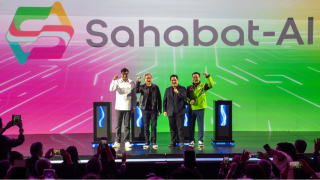There is fierce competition over the new cable system between Singapore and Australia
That wish is soon to be granted. But at this stage, it is unclear which of three competing Perth-to-Singapore projects will be ready for service first.
The three-way race is between cable construction company SubPartners and its APX-West system, Australia-Singapore Cable International (ASC) and Trident Subsea Cable.
The difficulty that has beset all three aspirants is that any route between Perth and Singapore must by necessity pass through Indonesian waters, ideally landing to pick up traffic from what is one of the boom Asian economies of the moment.
But passing via the Indonesian archipelago, let alone building a landing station there, requires navigation of the country’s Byzantine and glacially slow permit process, as controlled by the country’s Ministry of Communications and Information (MOCI).
The Indonesian government is also notably protective of its communications market, insisting that any foreign companies wanting to dabble in it must partner with an Indonesian enterprise and make use of Indonesian vessels whenever they want to lay or repair fibre. An intimation of how slow the whole thing can get is offered by the four months it took to repair SEA-ME-WE 3 after it was cut in January 2013.
Choose your partners
The three competing operators have been hard at work trying to fast-track their permits, while forging the necessary local alliances. ASC has cut a deal to work with PT XL Axiata Tbk, the second-largest mobile operator in Indonesia, while SubPartners is leaning on telco Indosat – a provider of fixed and mobile services – to further its negotiations. Trident has meanwhile linked up with Matrix Networks, operator of the Matrix Cable System, an existing subsea connection between Indonesia and Singapore.
Trident CEO Mark de Kock believes his deal gives the company a crucial competitive edge.
“Matrix was built with a branching unit off the coast of Jakarta, with the intention of eventually taking the cable down to Australia,” he explains. “We’ve agreed with them to take two fibre pairs on the system and get access to that branching unit. Now we’re building down to Australia. The significance is that the deal comes with all the Indonesia permits required to operate a cable system there through their territorial waters.”
De Kock says Trident is at the stage of marine and terrestrial surveys, and is well advanced in the process of getting sufficient presales in place to meet the requirements of its investors.
“The finishing post is in sight,” he claims. “We’re confident that we’ll be the first system delivering on this route, and we’re aiming for Q2 2015 for RFS.”
The first of the three projects to open for business will naturally have a major advantage over a second, let alone a third-placed competitor. Whoever is first past the post might indeed put the skids under the business plans of the other two, so De Kock’s words are fighting talk indeed.
Neck and neck
Despite his bullishness, the race would appear far from won. At the time of going to press, it was Capacity’s understanding that ASC International had just received its own Indonesian landing permit, although this could not be confirmed.
It certainly has all of the necessary Australian and Singaporean permits and licences secured for submarine and beach landing locations. It says it also has unique end-to-end connectivity to all capital city locations in Australia, meaning customers would have no need to purchase separate terrestrial backhaul.
Leigh Frame, COO with Alcatel-Lucent Submarine Networks, the construction partner of ASC, is certain that the project has every chance of seeing the light of day.
“We’ve done the preliminary phases for ASC,” he says. “The surveys are complete. Soon we’ll be moving to the next phase.”
ASC’s published timeline for the cable remains the same as it has been for the past few months, with an envisaged RFS date of March 2015, leaving it running neck-and-neck with Trident. SubPartners may have yet to score the necessary permit, but it would be foolhardy at this stage to write any of the three out of the game.
Whichever prevails, the real winner will arguably be Australia’s communications sector. Not only will it gain a modern high-capacity link to Singapore and the ability to interconnect with any number of major systems there, but the vital box of providing redundancy for the country’s east-coast cables will have been ticked.
At present, Australia’s cable links all land dangerously close to each other in Sydney, meaning that a viable west-coast option would satisfy everybody.




